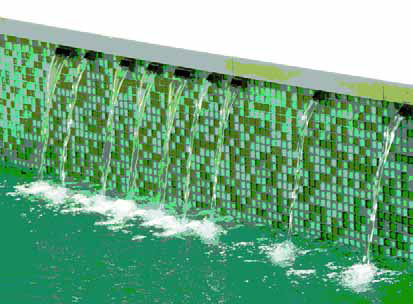ARTICLES
Advance Search
Aquatic Health
Aquatic Health, Fitness & Safety
Around the Internet
Aquatic Culture
Aquatic Technology
Artful Endeavors
Celebrity Corner
Life Aquatic
Must-See Watershapes
People with Cameras
Watershapes in the Headlines
Art/Architectural History
Book & Media Reviews
Commentaries, Interviews & Profiles
Concrete Science
Environment
Fountains
Geotechnical
Join the Dialogue
Landscape, Plants, Hardscape & Decks
Lighter Side
Ripples
Test Your Knowledge
The Aquatic Quiz
Other Waterfeatures (from birdbaths to lakes)
Outdoor Living, Fire Features, Amenities & Lighting
Plants
Ponds, Streams & Waterfalls
Pools & Spas
Professional Watershaping
Structures (Editor's Notes)
Travelogues & History
Water Chemistry
WaterShapes TV
WaterShapes World Blog
Web Links
Around the Internet
Aquatic Culture
Aquatic Technology
Artful Endeavors
Celebrity Corner
Life Aquatic
Must-See Watershapes
People with Cameras
Watershapes in the Headlines
Sometimes, just when you think you have things all figured out, something comes along to transform your point of view. For as long as I've been a part of the watershaping trades in general and the pool/spa industry in particular, there have been those special occasions when I've had just the kind of experience that has caused me to see things with fresh eyes. Case in point is the trip I mentioned in my last column - the one in which I was heading to
Successful design is, I think, most readily achieved by linking a landscape to the architecture it accompanies. During my years as a landscape designer, however, I've seen far too many places where the landscape was apparently designed in a vacuum, displaying little to no connection to the home or any other structures on site. To the contrary, our job as landshapers is to
One of the themes we touch upon frequently in the pages of WaterShapes centers on the concept that an industry once thought to be the exclusive realm of fast-talking, quick-drawing operators with questionable products has been experiencing a brisk, revolutionary shift toward
One of the themes we touch upon frequently in the pages of WaterShapes centers on the concept that an industry once thought to be the exclusive realm of fast-talking, quick-drawing operators with questionable products has been experiencing a brisk, revolutionary shift toward
All projects come to an end, of course, but there are times when the inevitable takes its own, sweet time. The project featured here, for example, took more than six years from the time I first met the clients until we wrapped things up. Unlike some projects that take a long time because of ongoing problems, change orders and difficult challenges, this one was very much a labor of love from start to finish. Sure, there were some tough spots, but for the most part, this was one of those jobs that we watershapers and landscape professionals can only hope will come along from time to time - projects we don't mind extending through a period of years. This one had everything going for it, starting with great clients who had the resources to do something special as well as playful, fun-loving personalities that made the process exciting and rewarding. Then there was the property: an acre of ocean-view hillside in Brentwood, Calif., with mature trees and a big, Cape Cod-style house that was going through extensive remodeling during the time we were involved with the landscape. The clients wanted something that was elegant but playful, with formal lines and structures but a light overall touch. They insisted on beautiful materials, were heavily involved in every decision and, ultimately, had our firm, New Leaf Landscape of Agoura Hills, Calif., work with
There's something intriguing about heavy objects that float on water. In our daily lives, we often see traditional fountains made with utterly huge pieces of stone, but as gorgeous and compelling as those systems can be, it's the ones in which that stone moves that are the most fascinating of all. The very idea that you can move a massive piece of granite with just the slightest touch of a hand is simply mesmerizing. These floating objects become centerpieces immediately - a fact that has led to their proliferation in plazas and other public spaces around the
For centuries, human beings have turned to immersion and exercise in water as a means of healing injuries and illnesses and of promoting both physical and mental health. Researchers have investigated the hows and whys of these phenomena for years, and the benefits seem to be even more remarkable than originally thought. There's still much to learn, but there's already more than enough good news for watershapers to share with motivated clients. (Photos © Dreamstime)
We all have our different strengths and weaknesses and know that there are certain areas in which we can all improve. In my case, I'm good at the technical side of watershaping, but I'm much less accomplished in the client-relations/"people skills" department. I've made concerted efforts through the years to seek resources that can help me grow in this area, and my latest book selection is part of that personal quest. Not long ago, I took a twelve-point quiz that's designed to test whether or not you have a good sense of humor. I've never been a big one for telling knee-slapping jokes and I'd describe my sense of humor as "dry," but I certainly like to laugh and I've always considered myself as being someone who enjoyed things on the funny side. When I took this test, however, I scored a perfect zero out of twelve, so by this assessment it seems I have no sense of humor at all. Working past this odd humiliation, I began thinking about this
Elegance, romance, subtlety, tranquility: All these words speak to a potential of watershaping that is realized far too infrequently. If ever there were a common detail that typifies these missed opportunities, I'd have to give the prize to the standard waterfall/waterwall effects seen on too many pools and other watershapes these days. I can think of nothing less compelling than the typical sheet of water spilling down the face of a wall or in front of some other structure on its way into a pool or spa. This look is not only overused, but
I'm not a big believer in conformity, strict rules and absolutes, but sometimes in my travels I'll come across something that, well, is just wrong. These aren't matters of taste, style, or visual appeal: What I see is just plain wrong! Whether we classify ourselves as watershapers or landscape professionals, we collaborate with our clients to create spaces that appeal to them both visually and emotionally - environments that fit sets of needs and wants they have conveyed to us. Generally, we will find that there are certain colors that appeal to them, design styles they prefer, budgets they can afford, physical limitations to the site and codes by which they must abide. For all that, it's our professional responsibility to guide them within those parameters to a design that





















